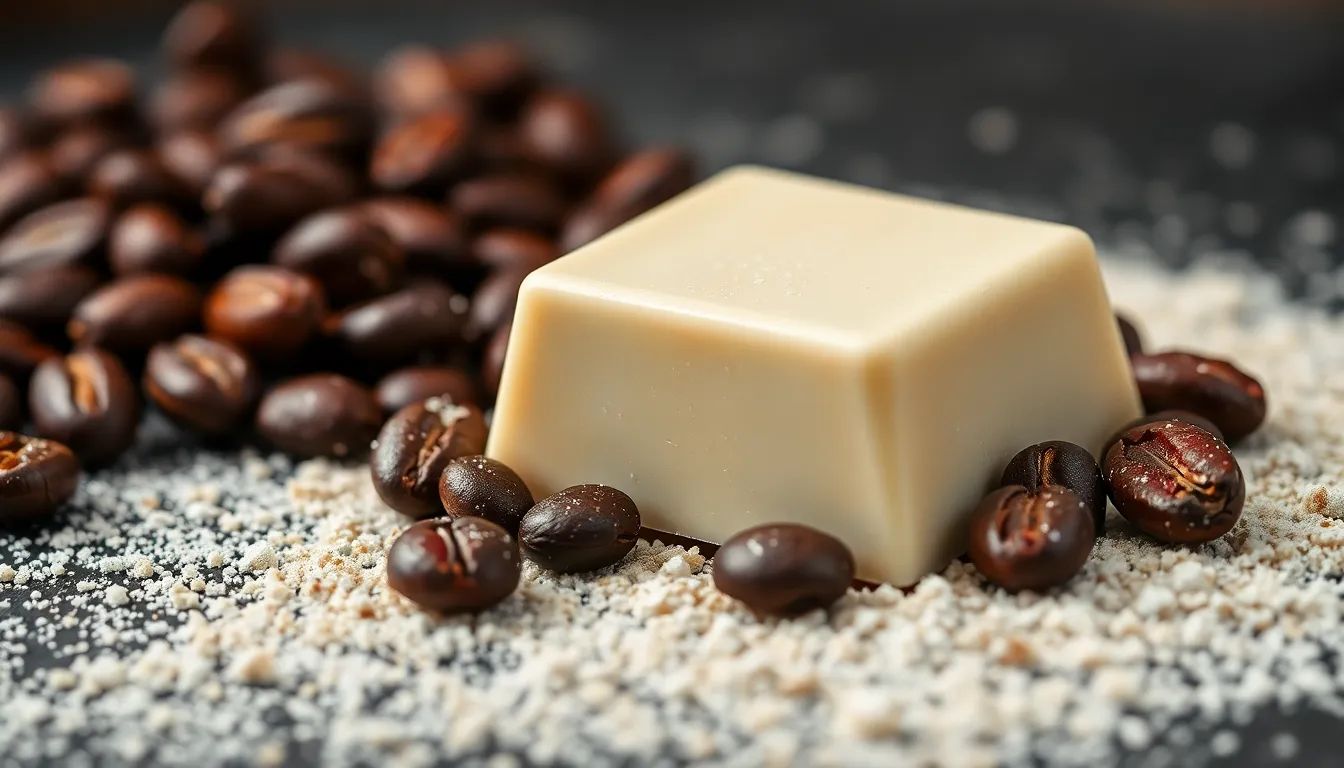White chocolate often sparks curiosity among chocolate lovers. Unlike its dark and milk counterparts, it lacks cocoa solids, leading many to wonder what actually goes into this creamy treat. With its sweet, buttery flavor and smooth texture, white chocolate has carved out a unique niche in the world of confections.
At its core, white chocolate is made from cocoa butter, sugar, and milk solids. This combination creates a rich, velvety experience that delights the palate. However, the absence of cocoa solids raises questions about its classification as chocolate. Understanding the ingredients that make up white chocolate not only satisfies culinary curiosity but also enhances appreciation for this indulgent treat.
Table of Contents
ToggleUnderstanding White Chocolate
White chocolate, while considered chocolate by many, contains no cocoa solids. Instead, it derives its unique flavor and texture from cocoa butter, sugar, and milk solids.
Definition of White Chocolate
White chocolate is a confection that consists primarily of cocoa butter, sugar, and milk solids. By definition, it lacks cocoa solids, which distinguishes it from dark and milk chocolates. The standard composition must contain at least 20% cocoa butter, 14% milk solids, and no more than 55% sugar. This combination creates a rich, creamy texture and a sweet taste, appealing to those who prefer a milder chocolate experience.
Differences from Milk and Dark Chocolate
White chocolate differs significantly from milk and dark chocolate in composition and flavor.
- Cocoa Solids: White chocolate contains no cocoa solids, while milk and dark chocolates derive a significant portion of their profiles from them.
- Flavor Profile: White chocolate offers a sweeter, creamier flavor due to the absence of the bitterness present in cocoa solids. In contrast, dark chocolate features a rich, deep taste, and milk chocolate balances sweetness with a creamy note.
- Color and Appearance: White chocolate appears pale or ivory, while milk and dark chocolates showcase deeper shades ranging from light brown to dark brown.
- Nutritional Content: White chocolate typically has higher sugar content and fewer antioxidants compared to milk and dark chocolates, which contain cocoa solids rich in flavonoids.
These differences contribute to the distinct identities of each chocolate type, catering to varied preferences among chocolate enthusiasts.
Ingredients of White Chocolate

White chocolate comprises key ingredients that contribute to its distinct character. These components blend to create its creamy texture and sweet flavor profile.
Cocoa Butter
Cocoa butter serves as the primary fat in white chocolate. Derived from cacao beans, it contains approximately 100% cocoa fat. Cocoa butter provides a smooth mouthfeel and a rich, buttery taste. It acts as a binding agent for other ingredients and contributes to the overall richness of white chocolate, forming the foundation of its luxurious texture.
Sugar
Sugar is essential for balancing the flavors in white chocolate. Typically, white chocolate contains between 30% and 55% sugar, contributing to its sweetness. The sugar content enhances the flavor while allowing the creaminess of cocoa butter to shine. This higher sugar level differentiates white chocolate from darker varieties, which often have more complex flavor profiles due to lower sugar and higher cocoa solid content.
Milk Solids
Milk solids add creaminess and a dairy flavor to white chocolate. Comprising both milk powder and whey, milk solids provide about 14% of the total weight in white chocolate. This ingredient contributes to the pale color and soft texture, creating a pleasant contrast with the sweetness of sugar and the richness of cocoa butter. The presence of milk solids also enhances the overall taste profile, making white chocolate creamy and indulgent.
Emulsifiers
Emulsifiers, like lecithin, play a crucial role in white chocolate production. These additives ensure a uniform blend of ingredients by reducing surface tension between cocoa butter and other components. Emulsifiers promote consistency in texture and prevent separation during storage. They also contribute to the smoothness and stability of white chocolate, ensuring it melts evenly in the mouth.
The Production Process
The production of white chocolate involves several key steps, each critical to achieving its unique flavor and texture. These processes include sourcing ingredients, mixing and conching, and tempering and molding.
Sourcing Ingredients
Sourcing ingredients for white chocolate starts with high-quality cocoa butter, often derived from the fat of cacao beans. The sugar component typically includes granulated sugar or powdered sugar, contributing sweetness. Milk solids, comprised of whole milk powder or skimmed milk powder, provide creaminess and richness. Additionally, emulsifiers like lecithin are sourced to enhance texture and stability.
Mixing and Conching
Mixing and conching involve blending cocoa butter, sugar, and milk solids until fully integrated. During this process, heat and friction refine the mixture, improving smoothness. The duration of conching varies; longer times allow for better flavor development and a silkier texture. This step is crucial, as it ensures the final product is free from gritty particles.
Tempering and Molding
Tempering and molding follow mixing and conching. Tempering stabilizes cocoa butter crystals through controlled cooling and reheating, resulting in a shiny finish and satisfying snap. After tempering, the mixture is poured into molds, taking shape as it cools and solidifies. The final product undergoes cooling to achieve the desired consistency before packaging.
Nutritional Profile
White chocolate offers a distinct nutritional profile influenced by its unique ingredients. Understanding its calorie content and macronutrients aids in assessing its role in a balanced diet.
Calories and Macronutrients
White chocolate contains about 540 calories per 100 grams. Its macronutrient breakdown typically includes:
| Macronutrient | Amount (per 100g) |
|---|---|
| Total Fat | 30g |
| Saturated Fat | 18g |
| Carbohydrates | 60g |
| Sugars | 56g |
| Protein | 6g |
These values indicate that white chocolate is high in calories and fat, particularly saturated fat, and also contains significant sugar. The moderate protein content typically comes from milk solids.
Health Considerations
While white chocolate provides energy, it’s essential to consume it in moderation. Its high sugar and fat content can contribute to weight gain and increased risk of chronic diseases if consumed excessively. Unlike dark chocolate, white chocolate lacks beneficial antioxidants, which may limit its health benefits. Individuals concerned about sugar intake or those with specific dietary restrictions should approach white chocolate judiciously.
White chocolate stands out in the chocolate family due to its unique ingredients and flavor profile. With its creamy texture and sweet taste it offers a delightful alternative to darker chocolates. Understanding its composition helps consumers appreciate the differences and make informed choices. While it may not provide the same health benefits as dark chocolate it’s still a beloved treat for many. Enjoying white chocolate in moderation allows individuals to savor its rich flavors without compromising their dietary goals.



